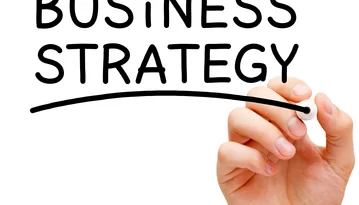The 4 Ps Of Marketing
The four Ps of marketing—product, price, place and promotion—serve as a framework for marketing success. Sometimes referred to as the marketing mix, the four Ps help guide businesses in the creation of winning business ideas that deliver what customers want, where and how they want it at a price that’s most appealing.
Building a solid marketing plan structured around the four Ps can help you increase awareness for your brand and its products or services, drive sales and achieve overall stronger bottom-line results.
What Are the Four Ps of Marketing?
The idea of a marketing mix was first popularized in the 1950s by Neil Bordon, a Professor of Advertising at Harvard. Drawing from Bordon’s work along with the work of other prominent marketing and business leaders, E. Jerome McCarthy introduced the four Ps of marketing in his book Basic Marketing: A Managerial Approach.
You may recall from your Intro to Marketing college course that product, price, place and promotion are the four Ps of marketing. While the four Ps have been around for decades, the concept is just as relevant to businesses today as it was when the four Ps were first introduced.
The First P: Product
The first P in the four Ps of marketing is product. A product can come in a variety of forms, such as a physical product, digital product, service, event or experience. The product is the actual item you are selling; the features or attributes you include or build into your products can help you differentiate your offerings from your competitors.
There are many dimensions that you must consider when deciding which products to develop and sell. Does your product solve a problem? Or does the product fulfill consumers’ wants and desires? Why would someone want to buy it? Product quality, design, packaging, variety, adaptability, sustainability, safety and production must all be considered.

Your marketing plan should outline the key features of your product, what makes it unique and who your target audience is for that product. This will help ensure you meet the needs and desires of your ideal audience.
The Second P: Price
The second P in the four Ps of marketing is price. Naturally, you need to price your products in a way that allows you to operate profitably. However, pricing is far more complex than calculating the cost of goods and adding on an additional amount that will let you meet your desired profit margin. How you price a product will convey its relative value and quality.
Walmart uses low-cost pricing to attract a broad audience of value-driven shoppers, while Saks Fifth Avenue sustains much higher prices, which is common among luxury goods sellers who target wealthy buyers. If you decide to serve different types of customers, you’ll need to develop a customer segmentation strategy, which will include pricing strategies for each segment you serve.
There’s also a psychological factor in product pricing, which is why products are often priced at $9.99 rather than $10. Products with prices ending in .99 seem cheaper than those that end in zero, and hence more shoppers are drawn to the $9.99 price tag.
The Third P: Place
The third P in the four Ps of marketing is place, which refers to the channels or locations where you sell your products and services.
You may want to sell products via a brick-and-mortar store or at less permanent physical locations, such as special events, fairs, pop-ups or temporary markets. Or, you may prefer to list your products for sale via an e-commerce platform—by either building your own e-commerce website or by selling through popular online marketplaces such as eBay, Amazon or Etsy.
Where you sell your products will influence how you manage product inventory and product transportation or shipping. Location also influences the relative size of your reachable market. Some businesses find they can optimize sales by offering goods and services via multiple outlets.
The Fourth P: Promotion
The fourth P in the four Ps of marketing is promotion, which is how you get the word out about your products and what tactics you use to convert prospects into buyers. Your promotion strategy may include advertising, public relations, social media marketing, content marketing, direct marketing and influencer marketing, as well as the discounts and special offers you extend to generate sales.
Even the best product in the world doesn’t stand a chance if you don’t have a strong promotion strategy behind it. While there are some promotional tactics that can be done on a shoestring budget—such as do-it-yourself blogging and social media—others can be costly. It’s important to factor anticipated promotional costs into your product pricing strategy.
Source: Forbes.com




